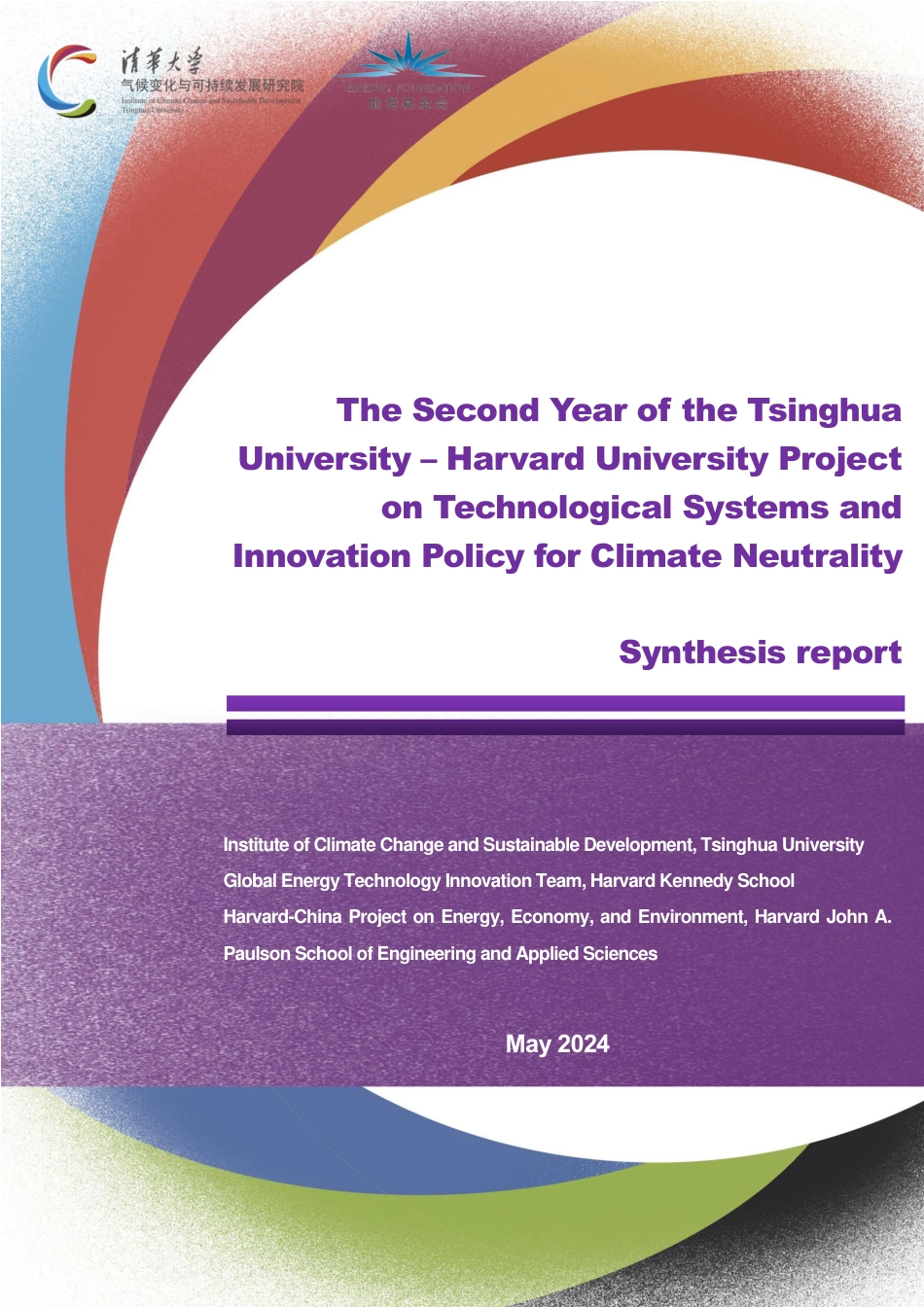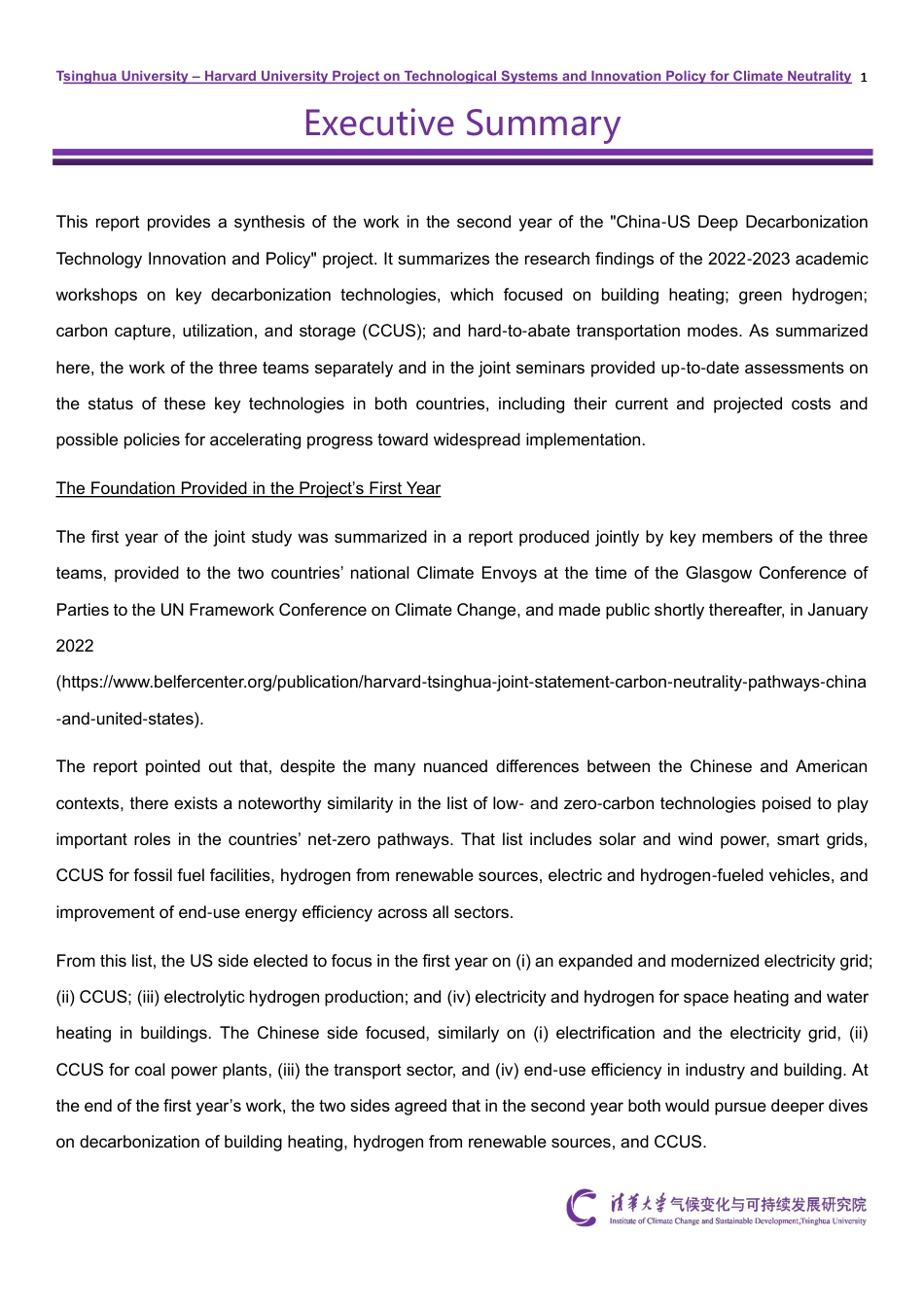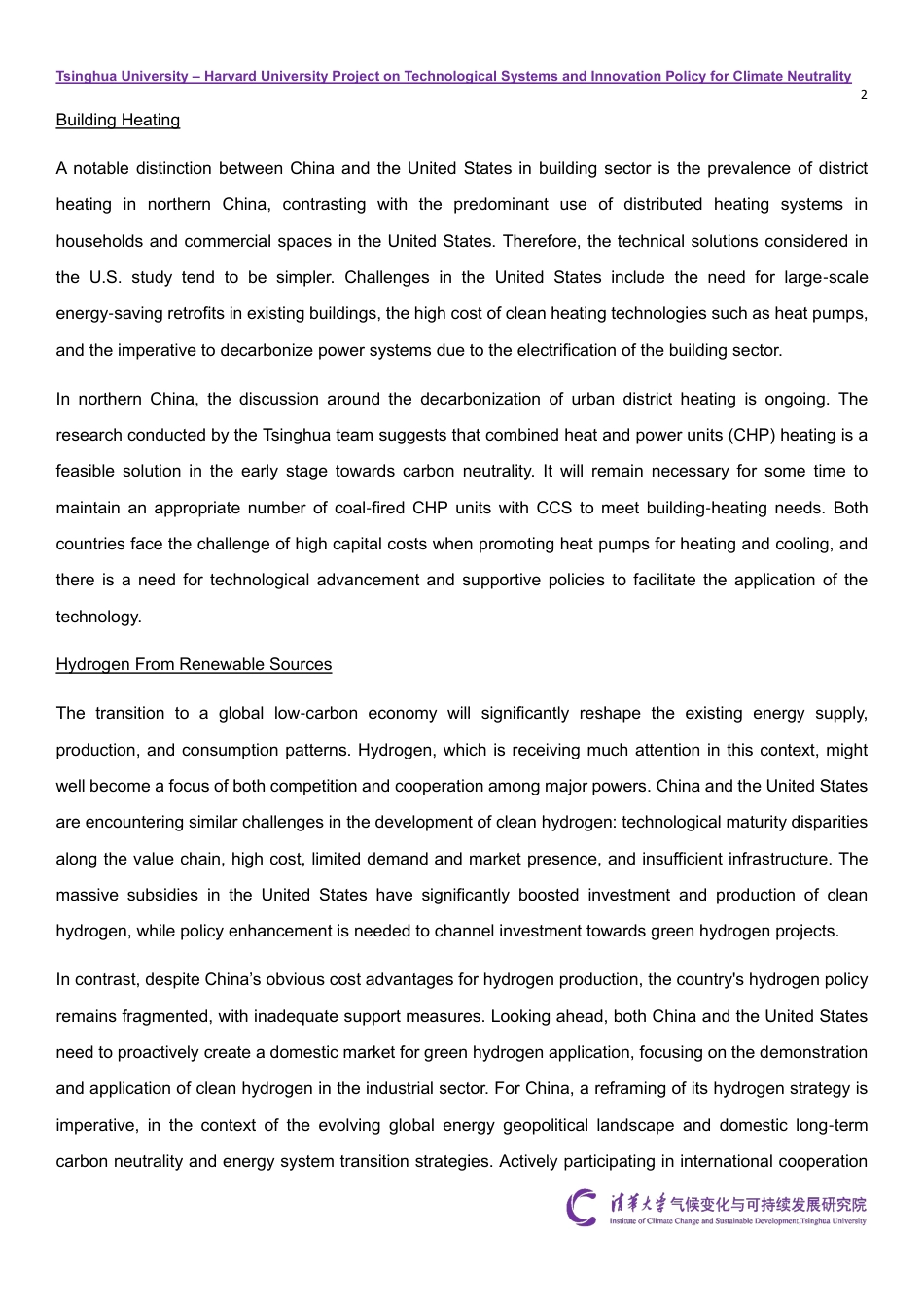InstituteofClimateChangeandSustainableDevelopment,TsinghuaUniversityGlobalEnergyTechnologyInnovationTeam,HarvardKennedySchoolHarvard-ChinaProjectonEnergy,Economy,andEnvironment,HarvardJohnA.PaulsonSchoolofEngineeringandAppliedSciencesMay2024TheSecondYearoftheTsinghuaUniversity–HarvardUniversityProjectonTechnologicalSystemsandInnovationPolicyforClimateNeutralitySynthesisreportTsinghuaUniversity–HarvardUniversityProjectonTechnologicalSystemsandInnovationPolicyforClimateNeutrality11ExecutiveSummaryThisreportprovidesasynthesisoftheworkinthesecondyearofthe"China-USDeepDecarbonizationTechnologyInnovationandPolicy"project.Itsummarizestheresearchfindingsofthe2022-2023academicworkshopsonkeydecarbonizationtechnologies,whichfocusedonbuildingheating;greenhydrogen;carboncapture,utilization,andstorage(CCUS);andhard-to-abatetransportationmodes.Assummarizedhere,theworkofthethreeteamsseparatelyandinthejointseminarsprovidedup-to-dateassessmentsonthestatusofthesekeytechnologiesinbothcountries,includingtheircurrentandprojectedcostsandpossiblepoliciesforacceleratingprogresstowardwidespreadimplementation.TheFoundationProvidedintheProject’sFirstYearThefirstyearofthejointstudywassummarizedinareportproducedjointlybykeymembersofthethreeteams,providedtothetwocountries’nationalClimateEnvoysatthetimeoftheGlasgowConferenceofPartiestotheUNFrameworkConferenceonClimateChange,andmadepublicshortlythereafter,inJanuary2022(https://www.belfercenter.org/publication/harvard-tsinghua-joint-statement-carbon-neutrality-pathways-china-and-united-states).Thereportpointedoutthat,despitethemanynuanceddifferencesbetweentheChineseandAmericancontexts,thereexistsanoteworthysimilarityinthelistoflow-andzero-carbontechnologiespoisedtoplayimportantrolesinthecountries’net-zeropathways.Thatlistincludessolarandwindpower,smartgrids,CCUSforfossilfuelfacilities,hydrogenfromrenewablesources,electricandhydrogen-fueledvehicles,andimprovementofend-useenergyefficiencyacrossallsectors.Fromthislist,theUSsideelectedtofocusinthefirstyearon(i)anexpandedandmodernizedelectricitygrid;(ii)CCUS;(iii)electrolytichydrogenproduction;and(iv)electricityandhydrogenforspaceheatingandwaterheatinginbuildings.TheChinesesidefocused,similarlyon(i)electrificationandtheelectricitygrid,(ii)CCUSforcoalpowerplants,(iii)thetransportsector,and(iv)end-useefficiencyinindustryandbuilding.Attheendofthefirstyear’swork,thetwosidesagreedthatinthesecondyearbothwouldpursuedeeperdivesondecarbonizationofbuildingheating,hydrogenfromrenewablesources,andCCUS.TsinghuaUniversity–HarvardUniversityProjectonTechnologicalSystemsandInnovationPolicyforClimateNeutrality2BuildingHeatingAnotabledistinctionbetweenChinaandtheUnitedStatesinbuildingsectoristheprevalenceofdistrictheatinginnorthernChina,contrastingwiththepredominantuseofdistributedheatingsystemsinhouseholdsandcommercialspacesintheUnitedStates.Therefore,thetechnicalsolutionsconsideredintheU.S.studytendtobesimpler.ChallengesintheUnitedStatesincludetheneedforlarge-scaleenergy-savingretrofitsinexistingbuildings,thehighcostofcleanheatingtechnologiessuchasheatpumps,andtheimperativetodecarbonizepowersystemsduetotheelectrificationofthebuildingsector.InnorthernChina,thediscussionaroundthedecarbonizationofurbandistrictheatingisongoing.TheresearchconductedbytheTsinghuateamsuggeststhatcombinedheatandpowerunits(CHP)heatingisafeasibl...



 VIP
VIP VIP
VIP VIP
VIP VIP
VIP VIP
VIP VIP
VIP VIP
VIP VIP
VIP VIP
VIP VIP
VIP